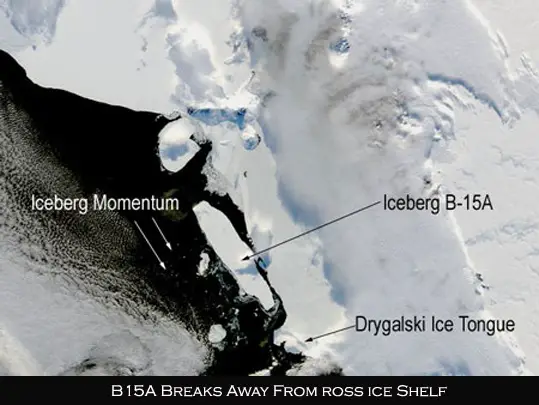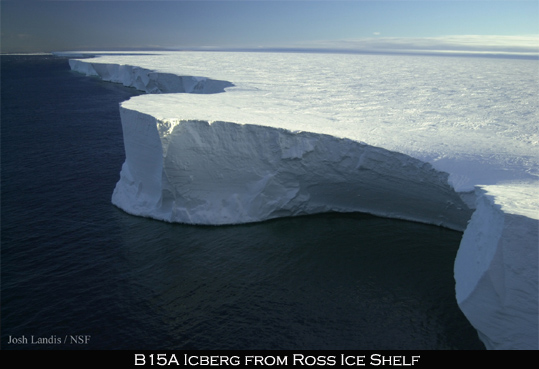The B15 Antarctic iceberg was the world’s largest recorded iceberg, with an area of over 11,000 km² it was larger than the island of Jamaica. It calved from the Ross Ice Shelf in March 2000, breaking up into several pieces in 2002 and 2003.

The largest of these, B-15A, was the world’s largest free-floating object—it was 122 km (76 miles) long, 27 km (17 miles) wide, and covered an area of 3,100 km² (1,200 mile², or approximately the size of Luxembourg). In November 2003, after the separation from B-15J iceberg, B-15A drifted away from Ross Island on the open waters of the Ross Sea. In December 2003 a small knife-shaped iceberg, B-15K (about 300 km²), detached itself from the main body of B-15A and started drifting northward. In 2005 prevailing currents took B-15A slowly past the Drygalski ice tongue; the collision broke off the tip of Drygalski in mid-April. Then the iceberg sailed on along the coast leaving McMurdo Sound until it ran aground off Cape Adare in Victoria Land and broke into several smaller pieces on 27–28 October 2005.
![]()
The largest piece is still named B-15A (its surface is now approx. 1700 km²), while three additional pieces were named B-15P, B-15M and B-15N. It has since moved farther up north and broken up into more pieces. These were spotted by air force fisheries patrol on November 3rd 2006. On November 21st several large pieces were seen just 60 km off the coast of Timaru, New Zealand. The largest measuring about 1.8 km wide and 120 ft high.

